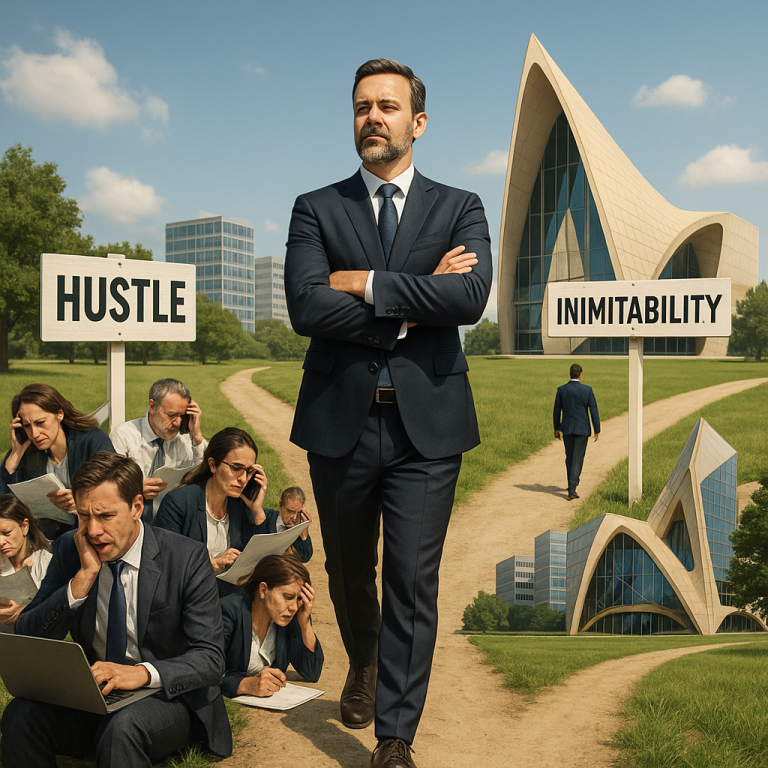In the high-stakes world of executive leadership, technical expertise and strategic vision are merely table stakes. What truly distinguishes exceptional C-suite leaders from their peers is something far more fundamental yet elusive: self-regulation—the ability to manage emotions, maintain focus, and respond thoughtfully rather than react impulsively under pressure.
I’ve spent the last decade working with executive teams across industries, and I’ve observed firsthand that emotional discipline isn’t just a nice-to-have soft skill—it’s the foundation upon which all other leadership capabilities are built. The most brilliant strategic mind becomes a liability when paired with poor emotional control. The most innovative visionary fails when unable to regulate under pressure.
The Neuroscience of Executive Self-Regulation
At its core, self-regulation is a neurological battle between our prefrontal cortex (responsible for rational thought) and our limbic system (our emotional center). When stress levels rise—as they constantly do in leadership positions—the limbic system can hijack our decision-making processes, triggering what neuroscientists call an “amygdala hijack.”
This isn’t just theoretical. A groundbreaking study published in the Journal of Leadership Studies found that during high-pressure decision scenarios, executives with poor self-regulation experienced up to a 50% reduction in access to their cognitive resources! Think about that—half of your intellectual capacity essentially goes offline when you need it most.
The good news? Brain plasticity means self-regulation can be developed. Recent research shows that regular mindfulness practice increases gray matter density in regions responsible for emotional regulation. One study of 200 executives found that those who practiced mindfulness for just 12 minutes daily for eight weeks showed measurable improvements in their ability to maintain composure during simulated crisis scenarios.
The Five Pillars of Executive Self-Regulation
True self-regulation encompasses five distinct but interconnected capabilities that today’s C-suite leaders must master:
1. Emotional Awareness and Management
You can’t manage what you can’t recognize. The foundation of self-regulation is developing real-time awareness of your emotional states before they influence your behavior. This means establishing a consistent practice of emotional check-ins throughout your day.
Sarah Chen, CEO of FinTech innovator BlockStream, implemented a simple but effective practice: setting her watch to vibrate every 90 minutes as a reminder to briefly assess her emotional state. “It seems almost too simple to work,” she told me, “but that micro-moment of awareness has prevented countless reactive decisions.”
The most effective executives develop personalized techniques to process emotions appropriately. This doesn’t mean suppressing feelings—quite the opposite. It means creating space to experience emotions fully while choosing responses aligned with your values and objectives.
2. Cognitive Flexibility Under Pressure
Leadership requires maintaining multiple perspectives simultaneously, especially when stakes are high. Cognitive flexibility—the ability to adapt thinking patterns in response to changing situations—becomes critical during crisis moments.
Michael Townsend, CFO at Meridian Healthcare, faced this challenge during a major acquisition that suddenly threatened to collapse. “My natural response was to narrow focus and push harder on the deal terms,” he explained. “Instead, I forced myself to step back and consider alternative scenarios. That mental flexibility ultimately led us to restructure the deal in a way that created more value for both parties.”
Cognitive flexibility techniques include scenario planning, devil’s advocate exercises, and intentionally seeking perspectives that challenge your initial assumptions. These practices help prevent cognitive tunneling—the tendency to fixate on a single approach when under pressure.
3. Impulse Control in High-Leverage Moments
Every leadership career includes high-leverage moments where an impulsive reaction can have outsized consequences. The capacity to pause before responding to provocative situations is a hallmark of executive self-regulation.
Research from the Leadership Performance Institute found that executives who implemented a simple five-second pause before responding to challenging information made decisions that were rated 32% more effective by independent evaluators than those who responded immediately.
Developing personal protocols for high-stakes communication scenarios creates guardrails for these crucial moments. One CEO I worked with created a simple rule: any email that triggered a strong emotional response would sit in drafts for at least an hour before sending. This single practice dramatically improved her communication effectiveness scores in 360 reviews.
4. Attention Management in a Distracted World
In today’s hyperconnected environment, the ability to direct and sustain attention has become a competitive advantage. Leadership effectiveness correlates directly with the capacity to remain fully present despite the constant pull of notifications, interruptions, and competing priorities.
Attention management goes beyond basic time management. It involves designing personal systems to protect your most valuable cognitive resources during critical performance periods. This might include communication boundaries during strategic thinking time, device-free meeting policies, or dedicated periods for deep work.
James Rodriguez, CTO of a major software company, implemented what he calls “monk mode mornings”—90 minutes of complete digital disconnection at the start of each day dedicated to his most complex problems. “Those distraction-free minutes are worth more than hours of fragmented attention,” he notes. “My team knows that unless there’s a genuine emergency, that time is sacred.”
5. Stress Resilience as Strategic Advantage
The physiological impact of chronic stress impairs decision-making, damages relationships, and eventually leads to burnout. Yet leadership positions inherently generate significant stress. The difference-maker is not the absence of stress but the capacity to process and recover from it effectively.
Stress resilience involves understanding your personal stress signatures—the early warning signs that your regulatory systems are becoming overwhelmed. These might include changes in sleep patterns, digestive issues, increased irritability, or difficulty concentrating.
The most effective executives develop personalized stress regulation techniques calibrated to different contexts. For some, this includes physical practices like strategic exercise, breathing techniques, or micro-meditation. For others, cognitive reframing practices or connection with specific support people serves as a regulatory reset.
How Self-Regulation Changes Leadership Performance
When executives master self-regulation, leadership performance transforms across several dimensions:
Decision Quality and Consistency
Research consistently demonstrates that emotional regulation directly impacts decision quality. A landmark study published in the Harvard Business Review found that executives with strong self-regulation made decisions with 24% greater consistency across similar scenarios than those with poor regulation.
This consistency stems from maintaining access to full cognitive resources during critical decisions and preventing emotional biases from distorting risk assessment. Rather than reacting to the emotion of the moment, self-regulated leaders create space for data-driven rather than fear-driven choices.
Maria Gonzalez, CEO of a global manufacturing firm, describes it this way: “Before I developed these practices, my decision-making quality fluctuated with my emotional state. Now there’s a consistency that my team can count on, regardless of external pressures.”
Relationship Trust and Influence
Leadership effectiveness ultimately depends on the quality of relationships. Emotional self-regulation builds trust through consistent behavior patterns that create psychological safety. When team members know their leader won’t overreact to challenges or feedback, they communicate more openly and take appropriate risks.
This consistency extends to accessibility during organizational stress periods. Leaders with strong regulation capabilities remain present and available when others become defensive or withdrawn. This emotional presence builds connection through authentic but regulated communication.
Crisis Navigation and Response
The true test of leadership often comes during crisis. Self-regulated executives remain calm and clearheaded during organizational emergencies, providing the emotional stability teams need under extreme pressure.
This capacity enables values-aligned decisions during ethical challenges when others might compromise under stress. It also allows for maintaining strategic perspective when organizational anxiety drives others toward reactive, tactical thinking.
Perhaps most importantly, regulated leaders create recovery processes after intense organizational periods. They recognize that crisis response depletes resources and proactively implement restoration practices for themselves and their teams.
Innovation and Adaptability
Emotional dysregulation creates defensive responses to challenging information. In contrast, self-regulated leaders cultivate openness to disconfirming data and feedback, essential prerequisites for innovation and adaptability.
This openness prevents defensive reactions to emerging market changes and creates psychological space for creative thinking. When leaders model intellectual flexibility and a learning orientation, it permeates organizational culture, making the entire system more adaptive.
Personal Sustainability and Legacy
The leadership graveyard is filled with brilliant executives who burned out from poor self-regulation. Sustainable leadership requires building practices that prevent emotional and physical depletion over time.
Self-regulated leaders create space for personal growth alongside professional achievement. They develop frameworks for work-life integration rather than attempting impossible “balance.” Most importantly, they maintain ethical boundaries under competitive pressure, building a leadership legacy based on wholeness rather than fragmentation.
Developing Self-Regulation as a Leadership Discipline
Self-regulation isn’t an innate trait but a developable capability. Here’s how forward-thinking executives are strengthening this critical skill:
Daily Mindfulness Practices
The research is unequivocal: consistent mindfulness practice strengthens the neural pathways associated with self-regulation. The key word is consistent. Brief daily practices outperform occasional longer sessions.
Effective executives implement brief but regular meditation routines, often just 5-10 minutes daily. They develop breath awareness during transitional moments—between meetings, before important conversations, or when shifting strategic contexts.
Many leaders I work with establish consistent check-ins with their emotional state, sometimes using technology to prompt these moments of awareness. The goal isn’t to control emotions but to develop the awareness that creates response choice.
Physical Foundations of Emotional Stability
The mind-body connection profoundly influences regulatory capacity. Sleep quality directly impacts the prefrontal cortex function essential for emotional regulation. One study found that after just two nights of poor sleep, emotional reactivity increased by 60% in otherwise well-regulated individuals.
Nutrition strategies that support brain function, particularly adequate protein, healthy fats, and blood sugar stability, create the biochemical conditions for better regulation. Movement practices—especially those that combine exertion with mindfulness like yoga or martial arts—regulate nervous system activity.
Many executives create recovery rituals that reset emotional baselines after particularly demanding experiences. These might include specific physical practices, connection with nature, or complete disconnection from work stimuli.
Feedback and Reflection Systems
Self-regulation improves dramatically with accurate feedback. Establishing trusted advisors who provide behavioral observations—especially during high-pressure periods—accelerates development. Executive coaching relationships focused on behavioral growth rather than just strategic thinking create structured accountability.
Creating reflection practices after high-stakes performances allows for continuous improvement. Many executives maintain leadership journals to process experiences and identify patterns in regulatory challenges. The most committed develop specific metrics for measuring self-regulation progress.
Situation-Specific Regulation Strategies
Different leadership scenarios create different regulatory challenges. Developing pre-performance routines for high-pressure situations—whether board presentations, difficult conversations, or strategic decisions—creates consistency in performance.
Creating communication protocols for conflict conversations prevents reactive patterns. Building decision frameworks for emotionally charged choices provides guardrails when objectivity is most challenging. Establishing recovery practices after depleting engagements ensures sustainable performance.
Community and Support Structures
Even the most self-aware leaders benefit from supportive relationships. Creating peer connections that allow for authentic processing of leadership challenges provides perspective and normalizes the emotional dimension of executive roles.
Leadership communities that value emotional development create space for vulnerability that individual coaching relationships can’t provide. Family systems that understand and support leadership demands become critical regulatory resources during intense periods.
Self-Regulation as Organizational Culture
The most powerful impact of self-regulated leadership extends beyond individual performance to organizational culture. When C-suite leaders model emotional discipline, it creates a cascading effect throughout the organization:
Psychological Safety and Innovation
Google’s landmark research on team performance identified psychological safety as the single most important factor in team effectiveness. Self-regulated leaders build environments where calculated risk-taking is encouraged because team members know emotional reactions won’t derail innovation.
This creates cultures where failure is treated as learning rather than cause for punishment or shame. Communication norms develop that support honest dialogue, even around challenging topics. Feedback systems promote growth mindsets rather than defensive responses.
Conflict Productivity and Resolution
Conflict itself isn’t problematic—unregulated responses to conflict are. Self-regulated leadership teams develop frameworks for productive disagreement that extract maximum value from diverse perspectives while maintaining relationship integrity.
Team norms for navigating tension prevent destructive conflict patterns. Communication protocols for high-stakes discussions ensure all voices are heard without emotional escalation. Relationship repair processes address inevitable breakdowns constructively.
Sustainable High Performance
Organizations led by self-regulated executives build rhythms that balance intensity and recovery rather than defaulting to constant urgency. This creates realistic expectations around communication responsiveness and availability.
Team practices develop that protect cognitive resources rather than depleting them through inefficient meetings and excessive collaboration. Cultural norms around boundaries and accessibility prevent burnout while maintaining accountability.
Crisis Resilience and Adaptability
Organizations inevitably face crises. Those led by self-regulated executives develop team protocols for emergency response that maintain perspective rather than amplifying anxiety. Communication frameworks for uncertainty periods prevent rumor and speculation.
Decision hierarchies for crisis navigation clarify authority while maintaining appropriate consultation. Recovery processes after organizational stress prevent the development of trauma responses that linger long after the immediate crisis passes.
Talent Development and Retention
The most talented professionals seek environments where they can thrive long-term. Organizations that value self-regulation build development pathways that include emotional intelligence alongside technical skills.
Mentoring relationships support whole-person growth rather than just career advancement. Leadership pipelines include behavioral elements in promotion criteria, ensuring that those who advance possess the regulatory capacities their new roles will demand.
Conclusion
As we navigate 2025 and beyond, the leadership landscape continues evolving rapidly. Technical skills remain important, but the truly differentiating factor for C-suite leaders has become their capacity for self-regulation. The ability to maintain emotional discipline—to respond rather than react, to remain present rather than defensive, to stay centered rather than scattered—has emerged as the superpower that separates truly transformational leaders from the rest.
I’ve witnessed firsthand how developing mastery across the five pillars of executive self-regulation transforms not just individual leadership effectiveness but entire organizational cultures. Self-regulated leaders navigate complexity with greater clarity, build more resilient teams, make more consistently sound decisions, and sustain their leadership impact over the long term.
The most successful organizations in the coming decade won’t just be those with the best strategies—they’ll be those led by executives who have mastered the art and science of self-regulation. As you consider your own leadership development, ask yourself: Is emotional discipline your superpower or your growth edge? The answer might determine not just your effectiveness but your entire leadership legacy.



